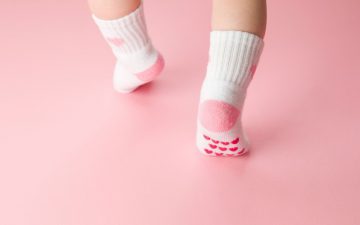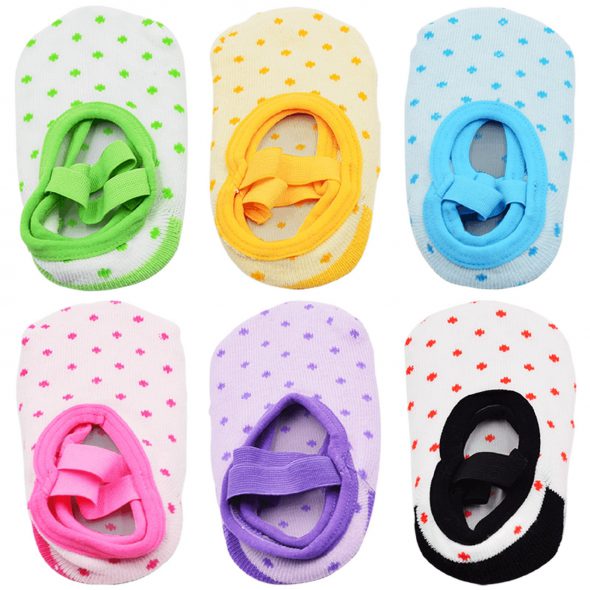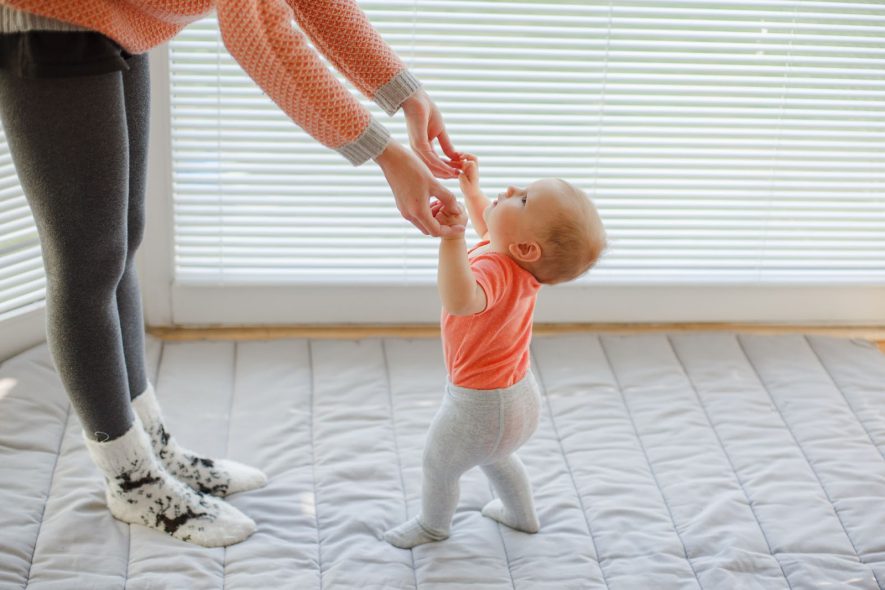
Babies typically start to walk between nine and twelve months old. It’s an important milestone in their development, and some parents think babies that can toddle around no longer need help. However, walking takes a lot of effort, so it’s crucial to support your baby as they learn to do it.
You can help your little one learn how to walk in many ways. One of those is making them wear grip socks. Grip socks are cotton-rich fabric with anti-skid features to provide traction. They prevent your baby from slipping and help them find balance and stability while walking.
Learn more about how grippy socks for babies can give your child comfort and protection when walking.
The Wonders of Baby Socks with Grips

Slip prevention
Grippy socks provide necessary traction between your baby’s feet and the floor. Using them can be crucial to ensure your child’s safety, especially around furniture pieces and household items that need anti-tip placements. They have much-needed anti-slip features to ensure your child will not accidentally skid while they’re practicing how to walk on smooth, slippery surfaces.
These anti-skid socks usually have rubber-like dots on the soles, but you can find them with other patterns, too. Thus, you have a wide selection of designs to choose from.
Temperature regulation
If you’re worried about your baby getting cold if they walk barefoot, you should let them wear nonslip socks instead of shoes. That’s because walking with socks can keep your child’s feet warm without hindering the natural development of their foot structure.
Additionally, wearing baby socks with grips on the bottom prevents them from getting frostbites, the signs of which include numbness and skin discoloration.
Foot injury protection
Having exposed feet while walking increases the likelihood of foot injuries. These include stubbed toes, puncture wounds, and dislocation.
To avoid these injuries, it’s best to make your baby wear grippy socks that ensure maximum foot protection. The socks’ cotton-rich fabric can also provide comfort and breathability throughout the day.
Bacteria and infection defense
The ground is a dirty place, with all sorts of bacteria lurking in it. So if your child spends time walking barefoot, they are more prone to contracting bacteria and infections. They may even touch their feet and unknowingly spread the bacteria on their face, eyes, and mouth.
Wearing baby socks with grips on the bottom reduces this likelihood because it provides a layer of protection. You also won’t have to worry about cleaning your baby’s feet as often as you would if they’re walking barefoot.
Posture, tactile sensory, and balance development
Walking with grippy socks gives your baby’s feet more freedom to develop naturally because socks are not as restrictive as shoes. Thus, their foot muscles and bones grow according to their body’s weight support and stability needs. It will also help their tactile sensory development and learning how to balance their body while walking.

Helping Your Baby Learn How to Walk
Providing adequate support as your baby develops the skill of walking is vital to their growth. These are the things you can do to encourage your little one to learn how to walk with or without baby socks with grippers on the bottom.
Develop their legs and core muscles.
Babies must have strong legs and core muscles to support themselves in standing and walking positions. Thus, you can start by teaching them to squat so that they’ll be familiar with the movements. This way, they can learn to catch themselves when they lose balance while practicing how to walk with their tiny feet.
Assist them when walking.
Your child will first try to take one or two small steps at a time. While they practice, you can assist them by placing your hands around their upper arms and pulling one arm forward after the other. Doing this will encourage them to follow and walk with your support. As they become more confident, you can gradually increase your distance from them.
Create a tempting trail.
You need to give your baby a reason to move. You can do this by holding their favorite toys in front of them and making them follow you around.
As your child’s mobility increases, you can also place a trail of eye-catching toys. This practice will encourage them to walk from one toy to the next, turning walking into a fun game.
Make use of push toys.
Push toys can be a huge help in encouraging your child to walk while gaining independence. They also encourage a variety of movements, such as squatting and reaching, so your baby can learn more skills. Just remember to choose a sturdy push toy that provides enough resistance on slippery floors. You can even pick ones that you can weigh down for slower motion.
Reward them.
Rewarding your child and showing them how happy you are about their accomplishment are effective ways to encourage them. You can do this every time they make progress while following your walking trails, using push toys, and even walking independently. Rewards will show them that they’re doing the right thing and motivate them to do better at walking.
You can give them edible rewards, such as healthy snacks and baby cookies. We also recommend giving them nonfood rewards like toys or their favorite learning materials.
Ashtonbee Baby Socks: An Essential for Walking Babies
Learning how to walk is a very challenging task because your baby has to find the right balance and stability while shifting their weight from one foot to the other. Thus, mastering walking can take them some time. But with little socks with grippers and your loving support, it won’t be impossible.
Ashtonbee’s baby socks have nonslip soles, making them ideal for walking practice indoors. Your little one’s feet will also stay warm and comfortable, thanks to the soft cotton material.
If you want to get the best baby socks and other baby accessories, check out our products on our website!



